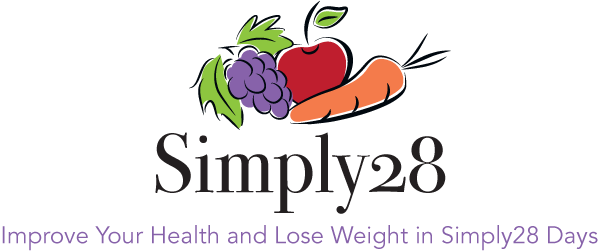The modern mindset regarding menopause is that it is an estrogen deficiency disease resulting from the ovaries’ failure to produce estrogen. Many women have been led to believe that symptoms associated with menopause and perimenopause is an indicator that they need estrogen hormone replacement. In fact, menopause is not a disease at all but a very normal time in a woman’s life that marks the end of child bearing years and the beginning of a new chapter, one that can come with a new found freedom, confidence, beauty and wisdom.
Symptoms of Estrogen Dominance – During this time of transition women often experience a number of symptoms such as night sweats, hot flashes, and vaginal dryness that are believed to be signs of low estrogen. However, far more women are actually experiencing estrogen dominance, in that they have too much estrogen relative to progesterone. Symptoms of estrogen can last for 10 to 15 years if not treated and can start as early as the age of 35. Some symptoms include:
- Night sweats and hot flashes
- Decreased sex drive
- Abnormal periods (during perimenopause)
- Bloating & water retention
- Breast swelling & tenderness
- Headaches
- Mood swings
- Slow metabolism and weight gain (particularly around the abdomen & hips)
- Hair loss
- Thyroid dysfunction
- Unable to focus or feeling foggy
- Fatigue
- Difficulty sleeping
Estrogen dominance has been linked to allergies, autoimmune disorders, and certain types of cancer including breast cancer. It can increase blood clotting and is thought to be associated with the aging process.
What Causes Estrogen Dominance – During a normal menstrual cycle, estrogen is the primary hormone for the first two weeks leading up to ovulation. From there, progesterone levels increase to balance estrogen during the last two weeks of the cycle. As a woman approaches menopause her cycle tends to become irregular and she may experience cycles in which no ovulation occurs. Missing the ovulation phase results in a lesser production of progesterone to balance the estrogen levels.
Unopposed estrogen is just one factor of estrogen dominance. Estrogen dominance is more common in women in the United States due to a number of lifestyle factors including excess body fat, chronic stress, a low fiber diet, lack of vitamins and minerals, lack of high-quality fats, and environmental toxins.
But the good news is that these lifestyle factors are within our control. While there is a time and a place for hormone replacement therapy, there are many natural things we can do to reduce estrogen dominance. Let’s take a look at a few.
8 Steps to Naturally Reduce Estrogen Dominance
Digestion – Digestion is a foundational step in all areas of health. Poor digestion greatly reduces our ability to absorb vitamins, minerals and healthy fats from the food that we eat. Improve your digestion by eating in a calm and relaxed state. Avoid eating on the run or while feeling stressed. Chew food thoroughly. The act of chewing and producing saliva to break down food stimulates a multitude of enzyme reactions in the body for every stage of digestion. Consider adding something sour or a bitter to start your meal. The taste of bitter and sour stimulates digestive juices to help break down food. It is difficult to absorb nutrients from food that is not fully digested and broken down.
Hormone Support Diet – Support healthy hormone production and overall good health with a diet that is nutrient dense to balance estrogen and progesterone levels.
- Eat an abundance of fresh fruits and vegetables, particularly cruciferous vegetables including broccoli, cauliflower, cabbage and Brussel sprouts. These vegetables contain a phytochemical that promotes liver function and helps clear “spent” estrogen as well as other hormones.
- Eat adequate protein. Many women do not get enough protein in their diet. Aim for 4 to 6 ounces of protein at meal times in the form of wild caught or grass-fed meats, poultry, eggs, and fish. Include nuts and seeds for added protein and micronutrients to support healthy hormones.
- Choose healthy fats such as olive oil, avocado oil, coconut oil, and real butter from grass-fed cows. Avoid industrialized seed oils that are toxic, put more strain on the liver, and are destructive to every cell and tissue in our bodies.
- Start the day with this Hormone Support Breakfast.
Reduce Blood Sugar – Limit (or better yet avoid altogether) all white flour and sugars in any form other than when eating whole fruit. Limit or avoid alcohol, particularly sweet drinks and white wine. Sugar and alcohol are primary stimulants that bring on symptoms of estrogen dominance.
Reduce Chronic Stress – Lower stress levels allow us to sleep better and reduce stress hormones produced by the adrenal glands including cortisol. The adrenal glands are key players in producing estrogen from birth to puberty. When a girl enters puberty, the ovaries take over as the primary producer of estrogen. When a woman goes through ‘the change,” also known as menopause, the ovaries hand the baton of primary estrogen production back to the adrenal glands. However, if our adrenal glands have been overworked from chronically producing stress hormones, they become fatigued and unable to keep up with the demand of estrogen production. In the case of estrogen dominance, we need to clear out the old or “spent” estrogen and at the same time continue producing healthy levels of new estrogen.
Liver detox – The liver is one of the most vital organs of the human body and is responsible for more than 500 functions. One of those functions is clearing spent estrogen and other hormones from our blood stream. The liver processes hormones and prepares them to be excreted through our feces. However, when the liver has to work hard to eliminate toxins from our bodies, such as environmental toxins, food toxins, drugs, alcohol, and caffeine, it can be become blocked and sluggish. Detox the liver by eating a Hormone Support Diet as described above, avoiding sugar and alcohol, avoiding drugs, drinking plenty of water (typically ½ your body weigh in ounces), and get regular exercise to purge toxins through sweat. Consider drinking a cup of warm water first thing in the morning with 1/2 squeezed lemon or 1 to 2 tablespoons apple cider vinegar to promote liver cleansing.
Fiber – Get enough fiber from whole fruits and vegetables to move stool regularly preventing estrogen from being reabsorbed. If stool remains in the bowel too long, estrogen is reabsorbed into the blood stream and may result in estrogen dominance.
HIIT and Strength Training – Getting regular exercise helps reduce estrogen dominance and its symptoms. Getting our blood pumping, joints moving and our body sweating is very effective in clear spent hormones. However very long cardio workouts may produce more stress hormones and adversely affect our hormone production. Activities like HIIT (high intensity interval training) and strength training a few times per week have shown to help balance hormones, reduce fat stores, and maintain or increase muscle mass.
Reduce Body Fat – Estrogen is produced by other organs in our bodies and our fat cells. Increased body fat can lead to excess estrogen production and become imbalanced with progesterone. Excess body fat, especially around the middle effects our ability to release toxins and can be detrimental to our cardiovascular health.
Balancing estrogen and progesterone, and decreasing estrogen dominance is best managed with these natural lifestyle changes. However, some women may need additional support. In these cases, ask your health care provider about using a 2% bioidentical progesterone cream to help relieve symptoms. It is available over the counter but the amount used and application protocols should be discussed with your physician.
For more information on this and other menopause related subjects, check out “The Wisdom of Menopause” by Dr. Christiane Northrup, M.D.




